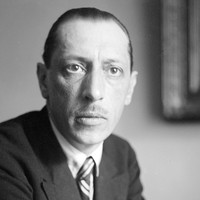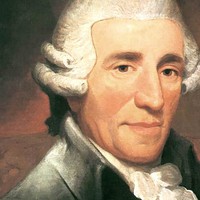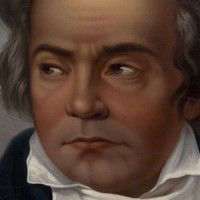Beethoven’s Violin Concerto



Stravinsky composed Les cinq doigts (The Five Fingers) for his young children in 1921, crafting eight short movements that explored the melodic possibilities of leaving the right hand mostly stationary over a single set of five notes. Even with such limited materials, the music sounded unmistakably like Stravinsky, with dancing rhythms and fractured themes indicative of his burgeoning “neoclassical” style. In another sense, Les cinq doigts prefigured the serial experiments from late in the composer’s career, when he again played with restricted tone combinations.
Stravinsky resurrected the little piano score in 1962, creating the arrangement he titled Eight Instrumental Miniatures for a 15-member ensemble. The orchestration went beyond mere note distribution, to include what Stravinsky described as “rhythmic rewriting, phrase regrouping, canonic elaboration, [and] new modulation.” Stravinsky conducted the premiere in Toronto several weeks before his 80th birthday, in what proved to be the last premiere that he directed himself
Aaron Grad ©2014

When the principal second violinist of the Esterházy Orchestra, Johann Tost, made plans to start a music distribution enterprise in Paris, Haydn offered him two new symphonies plus a dozen string quartets to resell. Tost, alas, was a bit of a scoundrel; he tried to pass off a symphony by Adalbert Gyrowetz as a third work by Haydn, and he was later implicated in a scheme to pirate, behind the composer’s back, Haydn’s manuscripts held in the Esterházy collection.
The Symphony No. 88 exhibits grandeur and breadth to match the preceding “Paris” symphonies. As in most of Haydn’s late symphonies, a slow introduction sets the stage; here, the dotted rhythms (a short-long pattern) of the opening chords suggest the character of French overtures from an earlier era. In the Allegro body of the movement, the violins begin with a figure suggestive of hunting horns, establishing material that lends the movement an al fresco air.
The Largo second movement, constructed as a theme with variations, holds the biggest surprise of this symphony. The opening statement, featuring solo oboe and cello, establishes a chamber-music intimacy. Then, forty measures into the movement, a fortissimo entrance by the entire ensemble adds the piercing force of two trumpets and timpani, whose absence in the first movement makes this point of arrival all the more thrilling.
The Menuetto also holds back a surprise. To complement the boisterous dance music of the main section, the contrasting trio introduces a rustic, droning texture, which supports exotic melodies in unusual modes. Closing the symphony on a high note, the finale hardly ceases its bouncing eighth-note pulse, and even its minor-key episodes exude buoyant charm.
Aaron Grad ©2012
 Listen to Audio
Listen to Audio
For musicians in Ludwig van Beethoven’s Vienna, one of the more effective ways to make a living was to produce concerts for their own benefit. Wolfgang Amadeus Mozart had specialized in those during his peak Viennese years (often debuting his new piano concertos there), and Beethoven followed suit, even after his encroaching deafness began to interfere with his performing career. When Beethoven’s friend Franz Clement asked for a concerto to play on his own benefit concert, the composer felt obliged to come through for the violinist who had introduced Beethoven’s Third Symphony on an earlier benefit concert, and who had been instrumental in getting the opera Fidelio produced.
Beethoven threw together an entire Violin Concerto with uncharacteristic speed, cutting it so close that the soloist supposedly had to sight-read the highly challenging part. Perhaps it was that lack of preparation time that left the public unmoved, sending the concerto into a dormant state. It didn’t catch on until Felix Mendelssohn brought the concerto back to life in an astonishing collaboration with a 12-year-old wunderkind, the violinist Joseph Joachim.
The Violin Concerto starts with a quintessential Beethoven theme: a single note, D, struck five consecutive times by the timpanist. This modest tapping motive proves to be the backbone of the substantial first movement, an outcome typical of Beethoven’s “middle period,” when he mastered the art of distilling musical ingredients down to their purest essence. One exceptionally refined moment comes just after the first movement cadenza, when the violin offers a guileless melody over a naked accompaniment of plucked strings.
The slow movement continues the rarified mood with a stately theme and variations accompanied only by the lower winds and muted strings. The Rondo finale, reached without pause through a solo cadenza, supplies the concerto with a more extroverted conclusion. Taking a page from Franz Joseph Haydn, who loved to introduce a theme softly and then hammer it hard the second time, Beethoven goes a step farther by delaying the impact until after two melodic cycles, the second voiced even more delicately than the first.
Aaron Grad ©2024
Get driving directions and find nearby parking.
Find dining options close to the venue.
View seating charts to find out where you'll be seating.
Get driving directions and find nearby parking.
Find dining options close to the venue.
View seating charts to find out where you'll be seating.
